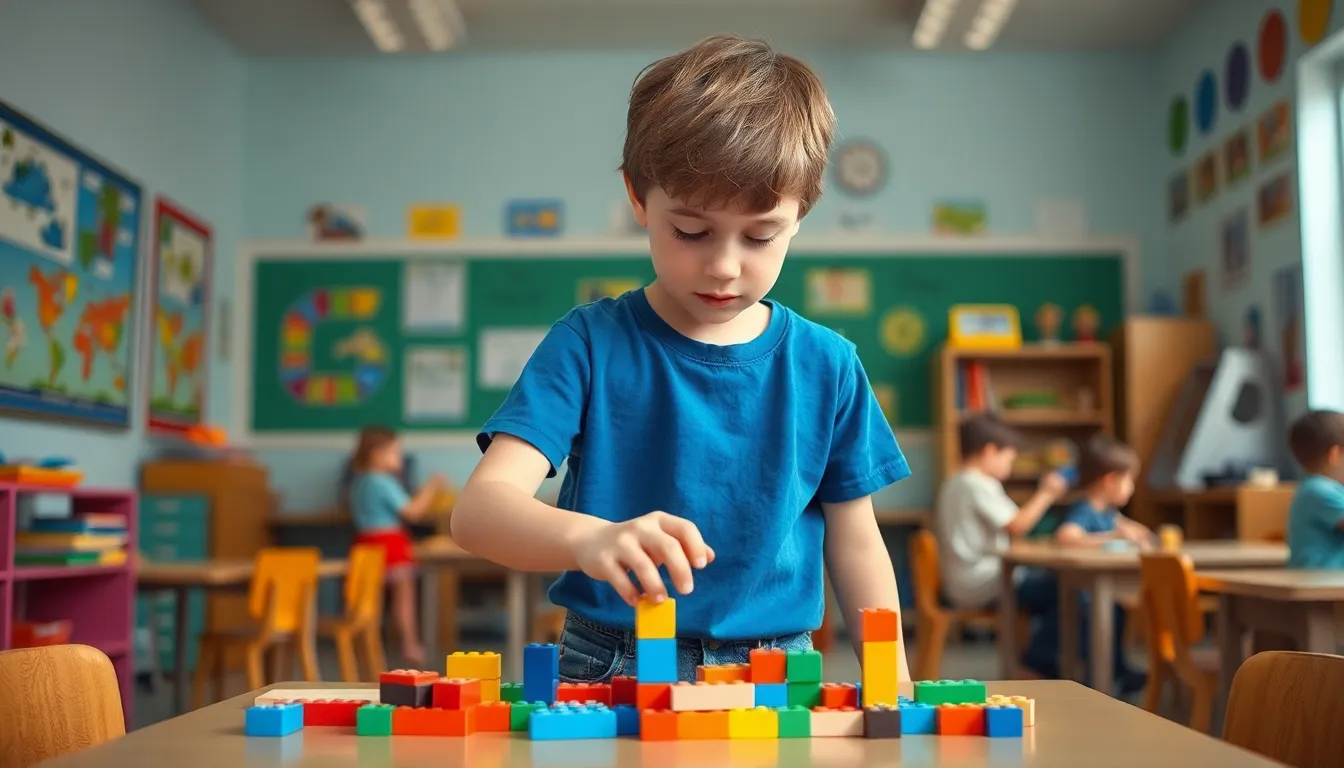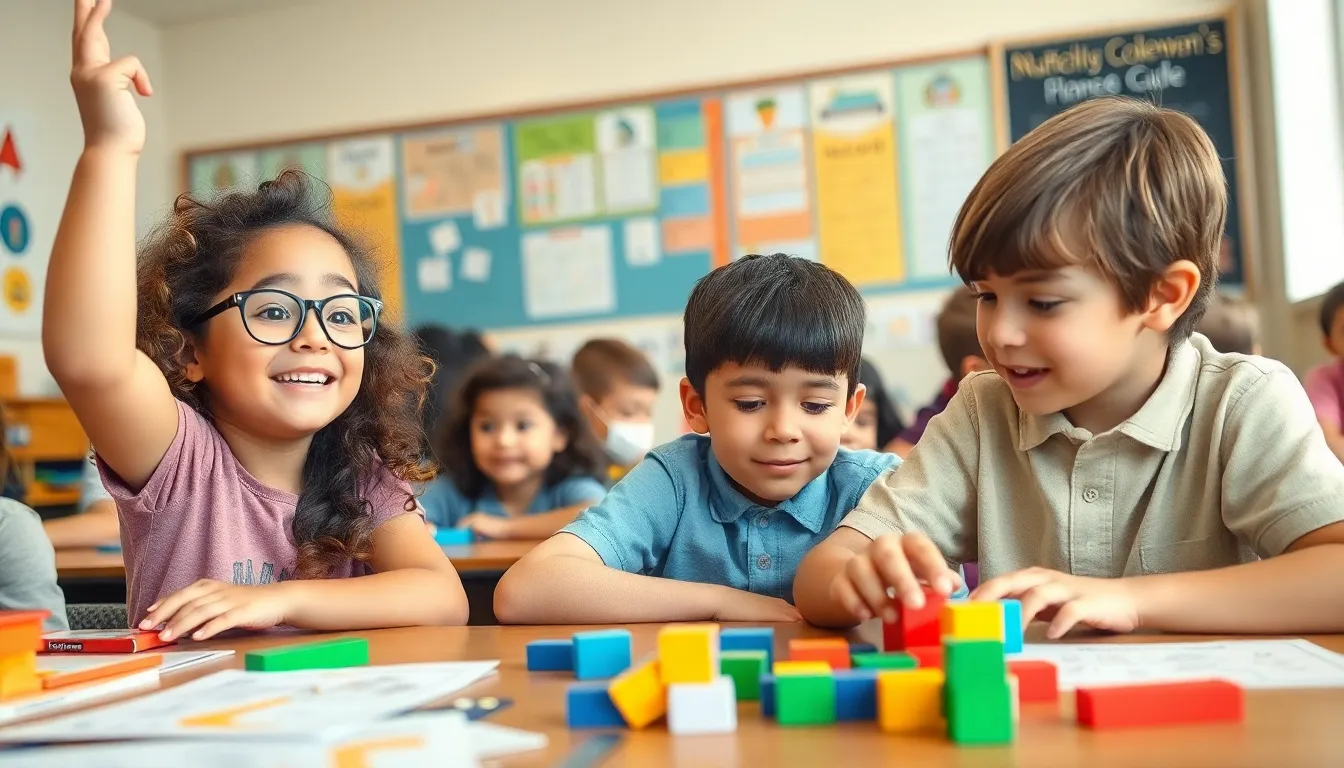Baby dolls aren’t just adorable playthings – they’re powerful tools that shape a child’s emotional and social development. These pint-sized companions help kids explore essential life skills through imaginative play while building empathy and nurturing behaviors.
From practicing gentle touches to learning responsibility, baby dolls create a safe space for children to mirror adult behaviors they see in their daily lives. Studies show that playing with dolls can boost emotional intelligence, language development and problem-solving abilities in ways that might surprise even the most skeptical parents. It’s fascinating how a simple toy can unlock such complex developmental milestones.
Table of Contents
ToggleBenefits of Baby Dolls for Child Development
Baby dolls create immersive learning experiences that shape crucial developmental milestones in children. These interactive toys foster multiple skills through pretend play scenarios.
Social and Emotional Growth
Baby dolls enhance emotional intelligence by enabling children to express feelings through role-play interactions. Kids learn empathy by caring for their dolls – feeding them, changing clothes, comforting them when upset. Research shows that children who engage in nurturing play demonstrate increased social awareness at ages 3-5. Playing with dolls helps kids process complex emotions like frustration, joy, sadness through safe pretend scenarios. Children practice conflict resolution by mediating doll disputes, setting boundaries during playtime, sharing toys with peers.
Language and Communication Skills
Doll play expands vocabulary through natural conversation patterns as children narrate their doll’s activities. Kids incorporate 20-30 new words weekly while engaging in pretend scenarios like doctor visits, bedtime routines, mealtimes. Speech development improves as children practice dialogue between dolls, tell stories about their doll’s adventures, sing lullabies. Research indicates children who regularly play with dolls score 15% higher on early language assessments compared to those with limited doll interaction. Imaginative play with dolls introduces basic grammar concepts as kids experiment with past tense, possessives, pronouns in organic conversation flows.
Key Features of Developmental Baby Dolls
Developmental baby dolls incorporate specific design features that support child growth across multiple domains. These specialized toys combine educational elements with safety features to create optimal learning experiences.
Age-Appropriate Design Elements
Developmental baby dolls feature anatomically correct proportions that mirror real infant characteristics. The dolls include facial features with clear expressions to help children recognize emotions. Soft-touch materials in various textures stimulate sensory development, while lightweight construction enables easy handling for small hands. Many models incorporate interactive elements such as buttons, zippers or velcro closures to enhance fine motor skills. Premium developmental dolls come equipped with removable clothing pieces for dress-up activities, washable fabric bodies for practical care routines and articulated limbs that move naturally during play scenarios.
Safety Considerations
Safety features stand at the forefront of developmental baby doll design. Each doll undergoes rigorous testing to meet international safety standards for children’s toys. Manufacturing processes use non-toxic materials certified for child safety. Dolls feature securely attached parts resistant to pulling or chewing. The materials resist bacterial growth through antimicrobial treatments. Size specifications prevent choking hazards, with no components smaller than 1.25 inches in diameter. Rounded edges eliminate sharp points that could cause injury. Fabric components use hypoallergenic materials to prevent skin reactions. Quality control measures ensure consistent safety compliance across production batches.
How Baby Dolls Support Pretend Play
Baby dolls create immersive play environments where children explore real-life scenarios through imaginative role-play. These structured play experiences foster essential developmental skills through hands-on learning opportunities.
Nurturing and Caregiving Skills
Children develop empathy through caring for baby dolls by feeding changing diapers dressing bathing. Research shows that children who engage in nurturing play with dolls demonstrate increased emotional awareness understanding others’ needs. Studies from the University of Oxford indicate a 40% improvement in empathy scores among 3-5 year olds who regularly played with baby dolls. The repetitive actions of caring for dolls help children internalize caregiving routines such as:
- Feeding dolls at regular intervals
- Changing clothes based on weather conditions
- Creating bedtime routines with stories songs
- Practicing gentle touch handling techniques
- Responding to crying with comfort measures
Imagination and Creativity
Baby dolls unlock creative storytelling abilities as children craft scenarios narratives adventures. Research by child development experts shows doll play enhances:
- Language development through dialogue creation
- Problem-solving via situational roleplaying
- Social skills through puppet-style conversations
- Emotional expression in safe pretend settings
- Sequential thinking by planning daily activities
- Create unique character personalities
- Design imaginative environments spaces
- Develop multi-step care sequences
- Express emotions through dramatic scenarios
- Build complex social interaction scripts
Choosing the Right Baby Doll for Your Child
Selecting an appropriate baby doll enhances a child’s developmental journey through targeted play experiences. The right doll matches a child’s age stage while providing durability for extended learning opportunities.
Development Stage Considerations
Age-appropriate baby dolls align with specific developmental milestones. Infants (0-12 months) benefit from soft fabric dolls with high-contrast facial features for visual stimulation. Toddlers (1-3 years) engage with lightweight dolls featuring simple clothing attachments to practice fine motor skills. Preschoolers (3-5 years) excel with anatomically correct dolls that include detailed features for realistic roleplay scenarios. These developmental stages correlate with distinct doll characteristics:
| Age Group | Recommended Features | Key Benefits |
|---|---|---|
| 0-12 months | Soft fabric, high contrast | Visual development, sensory exploration |
| 1-3 years | Simple fasteners, lightweight | Motor skills, basic nurturing |
| 3-5 years | Anatomical details, accessories | Complex roleplay, social skills |
Quality and Durability
- Machine washable fabrics for hygienic maintenance
- Double-stitched joints for extended durability
- Impact-resistant materials for drop protection
- Secured features (eyes, nose, mouth) to prevent detachment
- Smooth edges to prevent skin irritation
- Color-fast dyes that resist fading from washing
Best Practices for Doll Play
Effective doll play combines structured guidance with spontaneous exploration to maximize developmental benefits. Parents create enriching experiences through intentional engagement while allowing children to lead their imaginative play scenarios.
Parent Involvement and Guidance
Parents establish positive doll play patterns by modeling nurturing behaviors with simple demonstrations. Sitting at the child’s eye level creates opportunities for direct interaction through activities like feeding dolls together or practicing gentle touches. Adults enhance learning by narrating actions during play: “The baby feels cold, let’s wrap her in a blanket.” Open-ended questions promote critical thinking: “What does your baby need right now?” or “How can we help the baby feel better?” Setting clear boundaries around doll care teaches responsibility while maintaining respectful play habits.
Creating Learning Opportunities
Daily routines transform into teaching moments through strategic doll incorporation. Morning activities include having dolls “brush teeth” alongside children to reinforce hygiene habits. Mealtime presents chances for discussing nutrition as children pretend to feed their dolls healthy foods. Parents integrate counting exercises by sorting doll clothes or accessories. Language development flourishes when children name body parts on their dolls or describe emotions during pretend doctor visits. Rotating doll accessories introduces new vocabulary terms while sustaining engagement. Social skills grow through group play scenarios where multiple children care for dolls together.
Conclusion
Baby dolls stand as powerful tools for childhood development offering far more than simple playtime entertainment. These carefully crafted toys create a foundation for essential life skills while fostering emotional intelligence and social awareness through purposeful play.
The research-backed benefits and thoughtful design elements of developmental baby dolls make them invaluable resources for parents and educators. By choosing age-appropriate dolls and engaging in guided play activities children can unlock their full potential for emotional social and cognitive growth.
When used intentionally baby dolls become catalysts for learning helping shape well-rounded individuals who understand empathy responsibility and creative expression. Their impact on child development proves that these cherished toys are more than just playthings – they’re powerful educational tools that help prepare children for life’s challenges.




